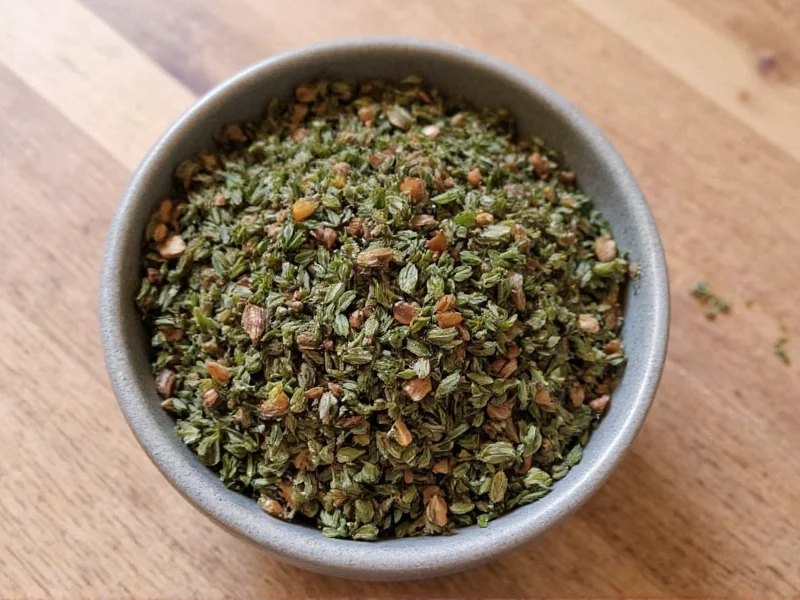Understanding Dried Thyme: Nature's Concentrated Flavor
Dried thyme represents one of the most valuable preserved herbs in culinary traditions worldwide. When thyme undergoes the drying process, its essential oils and flavor compounds become more concentrated as water content evaporates. This transformation creates a potent seasoning that delivers robust earthy, slightly minty, and lemony notes to dishes. Professional chefs and home cooks alike rely on dried thyme dried for its consistent flavor and extended shelf life compared to its fresh counterpart.
Dried Thyme vs Fresh Thyme: Key Differences
The fundamental distinction between dried thyme and fresh thyme lies in concentration and moisture content. Fresh thyme contains approximately 85% water, while dried thyme has reduced this to about 10-12%. This significant difference affects both flavor intensity and culinary application:
| Characteristic | Dried Thyme | Fresh Thyme |
|---|---|---|
| Flavor Intensity | 3-4 times more concentrated | Milder, more delicate |
| Best Used In | Long-cooking dishes, dry rubs, marinades | Garnishes, quick-cooking dishes, salads |
| Shelf Life | 1-2 years (properly stored) | 1-2 weeks refrigerated |
| Substitution Ratio | 1 teaspoon dried = 1 tablespoon fresh | 1 tablespoon fresh = 1 teaspoon dried |
Optimal Culinary Applications for Dried Thyme
Dried thyme excels in specific cooking scenarios where its concentrated flavor can fully develop. Unlike fresh herbs that lose potency with prolonged cooking, dried thyme actually benefits from extended exposure to heat. This makes it ideal for:
- Slow-cooked dishes: Stews, braises, and soups where flavors meld over hours
- Dry rubs and marinades: Penetrates proteins deeply for maximum flavor infusion
- Bread and pastry doughs: Adds subtle herbal notes to focaccia or herb breads
- Herb blends: Essential component in bouquet garni, herbes de Provence, and za'atar
- Vinaigrettes and sauces: Dissolves completely without textural interference
When using dried thyme dried in recipes, add it early in the cooking process to allow sufficient time for rehydration and flavor dispersion. For optimal results, crush the dried leaves between your fingers before adding to release essential oils.
Precise Substitution Guidelines
Understanding dried thyme substitution ratios prevents under-seasoning or overpowering dishes. The standard conversion follows a 1:3 ratio:
- 1 teaspoon dried thyme = 1 tablespoon fresh thyme
- ½ teaspoon dried thyme = 1½ teaspoons fresh thyme
- ¼ teaspoon dried thyme = ¾ teaspoon fresh thyme
When substituting dried for fresh in slow-cooked dishes, use the full 1:3 ratio. For quick-cooking applications like sauces or dressings, reduce the dried thyme by 25% to prevent overwhelming the dish. Remember that older dried thyme loses potency, so you may need to increase amounts slightly for herbs stored longer than 6 months.
Proper Storage Techniques for Maximum Freshness
Maintaining dried thyme quality requires careful storage practices. Exposure to light, heat, and moisture rapidly degrades flavor compounds. Follow these evidence-based storage methods:
- Store in airtight glass or metal containers away from light
- Keep in a cool, dark cupboard (not above the stove or near dishwasher)
- Maintain relative humidity below 60% in storage area
- Avoid frequent opening of container to prevent moisture exposure
- Never store near heat sources like ovens or radiators
Properly stored dried thyme maintains peak flavor for 12-18 months. After 24 months, most volatile compounds have degraded significantly. Test potency by rubbing a small amount between fingers—if the aroma remains strong, it's still usable. For extended storage, consider freezing dried thyme in vacuum-sealed containers.
Nutritional Profile and Health Benefits
Dried thyme concentrates not only flavor but also beneficial compounds found in fresh thyme. Per 100g, dried thyme contains significantly higher concentrations of:
- Vitamin C (160mg vs 45mg in fresh)
- Iron (123mg vs 1.1mg in fresh)
- Calcium (1,893mg vs 40mg in fresh)
- Manganese (7.6mg vs 0.5mg in fresh)
Thymol, the primary active compound in dried thyme, demonstrates antimicrobial properties in scientific studies. Research published in the Journal of Agricultural and Food Chemistry confirms dried thyme retains 85-90% of its antioxidant capacity after proper dehydration. Traditional medicinal uses include supporting respiratory health and aiding digestion, though these applications shouldn't replace medical treatment.
Effective Home Drying Methods
Creating your own dried thyme ensures maximum freshness and flavor control. Three reliable methods produce professional-quality results:
- Air Drying: Bundle 5-6 stems together and hang upside down in a dark, well-ventilated space at 60-70°F (15-21°C) for 1-2 weeks until leaves crumble easily
- Oven Drying: Spread leaves on baking sheet and dry at lowest oven setting (170°F/75°C) with door slightly ajar for 2-4 hours, checking frequently
- Dehydrator Method: Process at 95°F (35°C) for 4-8 hours until completely brittle
After drying, remove leaves from stems by rubbing between palms over a bowl. Store in airtight containers away from light. Home-dried thyme typically surpasses commercial products in flavor intensity when processed at peak freshness.
Common Usage Mistakes to Avoid
Even experienced cooks make errors when working with dried thyme dried. Prevent these common pitfalls:
- Adding too late in cooking: Dried herbs need 20-30 minutes to rehydrate and release flavors
- Using old, stale thyme: Check potency by aroma before using in important dishes
- Overpacking measuring spoons: Lightly fill teaspoon without pressing down
- Storing near heat sources: Kitchen cabinet above stove degrades quality 3x faster
- Using as garnish: Dried thyme's texture makes poor visual presentation
For best results, always crush dried thyme between your fingers before adding to dishes. This mechanical action releases essential oils and dramatically improves flavor dispersion throughout your recipe.











 浙公网安备
33010002000092号
浙公网安备
33010002000092号 浙B2-20120091-4
浙B2-20120091-4